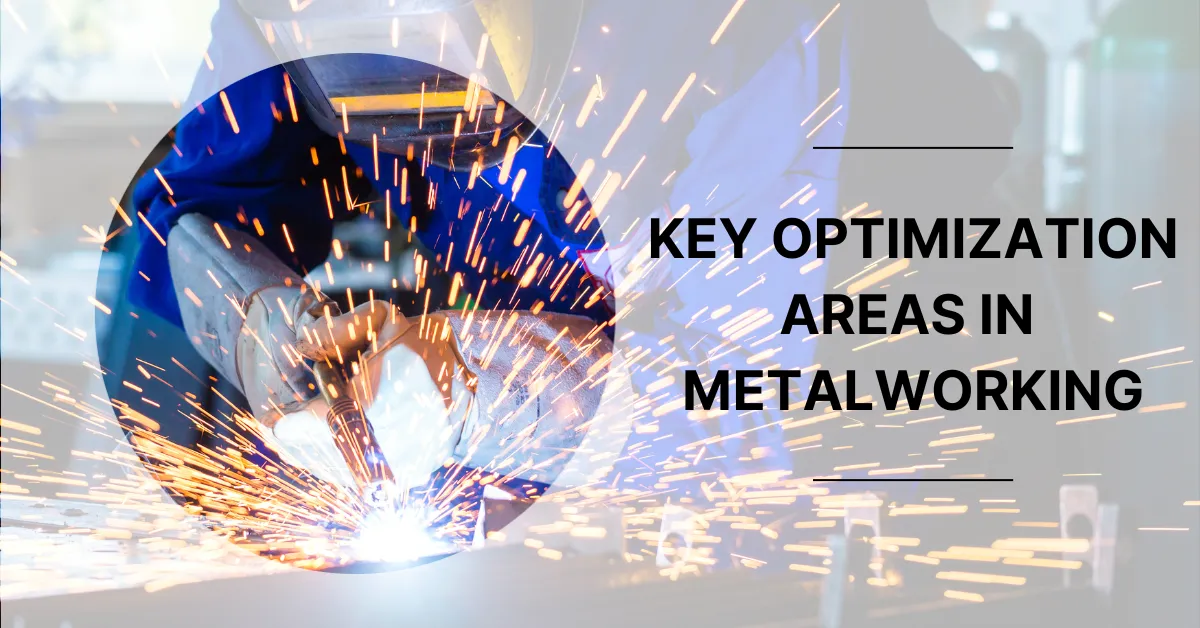
Key Optimization Areas for SMBs in Foundry, Forging, and Metalworking
For small and medium-sized businesses (SMBs) in the foundry, forging, and metalworking sectors, it can be easy to assume that operational improvements are limited to surface-level efficiencies. However, hidden beneath the surface are several powerful optimization areas that can transform productivity, cost-efficiency, and quality. Here are the key topics that often go unaddressed but can yield substantial benefits for SMBs in these industries.
1. Optimizing Scrap and Waste Management
In foundries and forging operations, metal waste and scrap are often seen as inevitable byproducts. However, without close tracking and optimization, these “inevitable” losses can eat significantly into profits. Implementing precise tracking for scrap and waste materials enables better forecasting of metal usage, minimizes costs, and often reveals patterns that point to more efficient casting, forging, or machining methods.
"Every bit of metal saved adds directly to your bottom line. Optimizing scrap management can reveal hidden profits and cost savings."
2. Leveraging Predictive Maintenance for Equipment Longevity
Heavy machinery is the backbone of any metalworking operation, and its downtime is both costly and disruptive. Predictive maintenance, which uses data and IoT sensors to monitor machine performance, can help SMBs foresee issues before they become critical. With predictive maintenance, you avoid unexpected breakdowns and extend the lifespan of your equipment, reducing long-term capital expenditure.
"Machine downtime doesn’t have to be a constant worry. Predictive maintenance offers early warnings that save both time and money."
3. Managing Energy Consumption with Real-Time Data
Foundries and metalworking facilities are notorious for high-energy consumption, which directly impacts profitability. Installing energy monitoring systems that provide real-time data allows you to pinpoint peak usage times, identify energy-intensive processes, and uncover ways to reduce consumption. For instance, adjusting the timing of high-energy processes to off-peak hours can help reduce costs significantly without altering production output.
"Energy costs are often seen as fixed—but with real-time data, they can become a controllable factor, saving money and improving sustainability."
4. Inventory Optimization for Raw Materials and Consumables
In metalworking, the balance between holding enough raw materials and minimizing excess inventory is crucial. SMBs often struggle with either overstocking (tying up valuable capital) or understocking (risking production delays). Leveraging digital inventory management tools tailored to your production cycle ensures you have the right amount of each material on hand, enabling smoother operations and lowering storage costs.
"Excess inventory is just capital sitting idle. Optimized inventory management gives you exactly what you need, when you need it."
5. Improving Workflow and Space Utilization
Metalworking operations can become cluttered and inefficient without periodic review of layout and workflow. Streamlining workspace layouts, from raw material storage to finished product areas, can significantly improve productivity and reduce time spent transporting materials across the shop floor. Simple adjustments—such as reorganizing workstations or introducing dedicated paths for materials—enhance workflow efficiency and reduce employee fatigue.
"An efficient workspace doesn’t just improve productivity; it makes every step of your process more streamlined and cost-effective."
6. Embracing Process Automation for Repetitive Tasks
While full automation might seem too ambitious for SMBs, targeted process automation can make a tangible difference, especially in repetitive tasks. Automated material handling, for example, can reduce the time spent moving heavy parts or loading machines, freeing up employees for more skilled tasks. Partial automation solutions are increasingly accessible and can be scaled up over time to match your company’s growth.
"Automation isn’t just for large factories. Strategic automation frees your team for higher-value tasks and reduces wear and tear on your workforce."
Conclusion: There’s Always Room to Improve
For SMBs in the foundry, forging, and metalworking sectors, these overlooked areas hold substantial potential for improvement. From managing energy consumption and optimizing scrap to strategic automation, each step toward optimization brings measurable cost savings and enhances operational efficiency.
If you're ready to explore how these optimizations can transform your operations, we’re here to help. Reach out to us for a free initial consultation, or join our free efficiency workshop, where we discuss your unique challenges and offer tailored insights.
#MetalworkingOptimization #FoundryEfficiency #PredictiveMaintenance #InventoryOptimization #SMBs #ManufacturingExcellence
